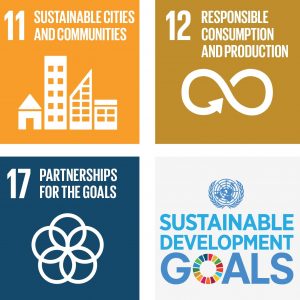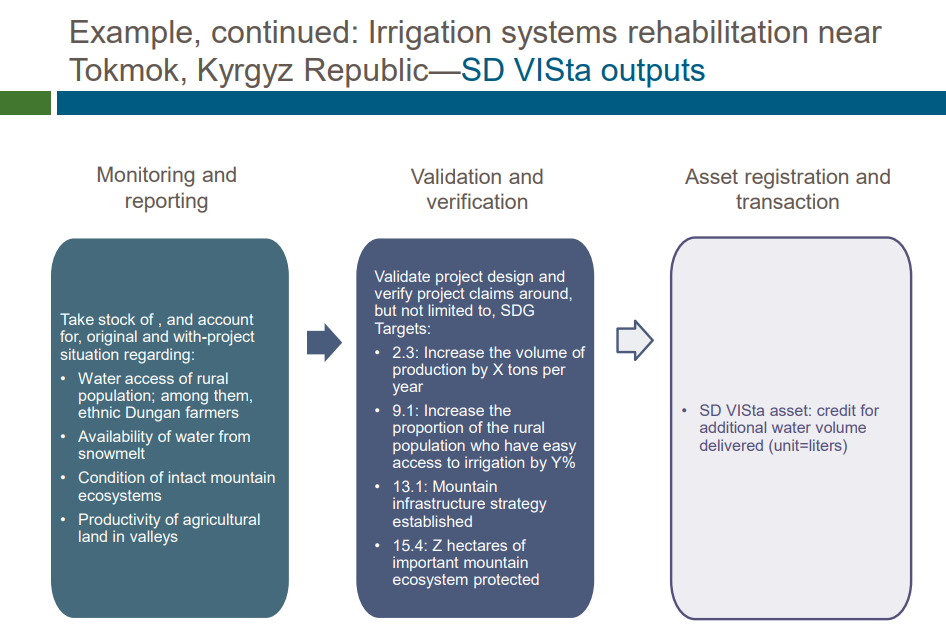How Do You Measure Compliance With Sustainable Development Goals?
Answer By March 4
Billions of dollars in finance are now tied to the UN’s Stainable Development Goals, but how do you measure compliance? The Verified Carbon Standard is asking for public comments on project requirements it’s developing for a framework of sustainability criteria called the Sustainable Development Verified Impact Standard (SD VISta).

1 February 2018 | In the past six months, major insurers like Aviva have started using the United Nations Sustainable Development Goals (SDG) to evaluate risk exposure, while wealth management groups like UBS began developing portfolios that will soon offer SDG-compliance across all asset classes.
“Impact investors” around the world are using the SDGs to define the impacts they’re investing in, and that could be huge: the Global Impact Investing Network estimates that at least $114 billion flowed into impact investments in 2016, and that certainly soared in 2017.
So, what are the SDGs, and how do we make sure they’re more than just lofty ideals?
First, the SDGs are a list of 17 sustainability criteria woven into the lending guidelines of development banks around the world. These criteria are further broken into 169 specific targets.
SDG 5, for example, focuses on gender equality, and it offers seven specific targets – all of which are laudable, but none of which are distilled into the kind of verifiable numeric rating that can be used to compare one project to another.
“An example would be hours of drudgery reduced,” says Julianne Baroody, who manages engagement with sustainable development issues for the Verified Carbon Standard, which is developing a standard that will enable projects to assess their contributions towards the SDGs.
Another carbon standard, the Gold Standard, launched the Gold Standard for the Global Goals last summer, and it recently launched a standard focused explicitly on SDG 5: the Gold Standard for Certified Gender Impacts, which we will be examining in detail later this month.
Both standards aim to create two different types of output: one being a standardized, verifiable stamp of approval for benefits – such as, for example, improved irrigation – and the other being a more rigorous verification and validation process for SDG “assets” that can be sold to other entities (see Assets and Advantages, below).
Share Your Views
The VCS framework is called the Sustainable Development Verified Impact Standard (SD VISta), and it aims to create a framework for methodologies (including, potentially, those from collaborating standards) that can be applied to any effort aiming (or claiming) to move the SDGs forward – whether that effort is an NGO built on doing good or a corporation built on generating profits and anxious to produce sustainability bona fides.
VCS is currently asking for public input on the SD VISta Project Requirements, which set out the indicators with which projects must demonstrate compliance in order to be certified to SD VISta. Comments will then be reviewed by a 19-member Advisory Committee comprised of representatives from governments, businesses, and NGOs, who are charged with creating guidance that’s stringent enough to make sure projects are delivering what they promise without letting the perfect become the enemy of the good.
“Complex and expensive metrics, sometimes seen in other verification protocols, are barriers to achieve tangible benefits to local indigenous and other traditional communities,” said Beto Borges, who runs Forest Trends’ Communities Initiative and serves on the Advisory Committee. “SD VISta brings a much needed and refreshing approach.”
VCS held a webinar in January to provide an overview of SD VISta and the Project Requirements. You can view webinar slides here, and you can watch the whole event in this recording.
Assets and Advantages
VCS used a hypothetical irrigation program to illustrate the difference between benefits and advantages, and those are illustrated here.
In the first chart, you can see how the fictitious project would meet specific SDG indicators and be certified as providing specific benefits.
If such an organization wanted to be certified, make claims, or generate credits for sale to, say, a development project that negatively impacts the same region, it would go through a deeper verification and validation process, as illustrated here:
Obviously, it’s more complex than that, and the webinar much more clearly than I can here. Be sure to check it out, and then follow these instructions for making your input known.
Please see our Reprint Guidelines for details on republishing our articles.




https://ecosystemmarketplace.com/articles/this-week-in-biodiversity-biodiversity-goes-big/,ecosystemmarketplace.com